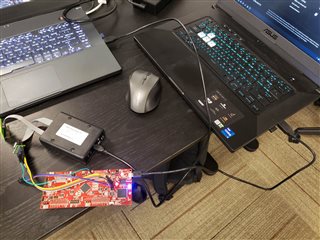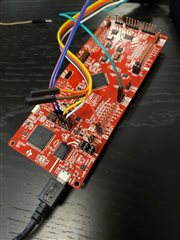Other Parts Discussed in Thread: TMS320F280025, LAUNCHXL-F280025C,
Hello,
I have designed a board using the DSP, TMS320F280025, and want to flash it via Jtag. As part of the development process we bought a launchpad (LAUNCHXL-F280025C)
to test flashing using a XDS110 probe (TMDSEMU110-U) before sending the board to fabrication.
We are able to flash the board via the onboard XDS110, however we wanted to verify and test that we're able to flash it with the external probe as well.
I have connected the launchpad and XDS110 to computer using USBs, using jumper wires to connect TMS, TCK, Vref, and GND between the XDS and launchpad (with the corresponding jumpers removed on the launchpad). I selected the correct serial number for the XDS110 in CCS. When trying to flash the board, I get the following error:
" Error: (Error -1156 @ 0x0) Device may be operating in low-power mode. Do you want to bring it out of this mode?"
Hitting yes doesn't do anything, and as the device works fine when using the onboard XDS, it shouldn't be in low-power mode.
I've already tried following the instructions here: https://software-dl.ti.com/ccs/esd/documents/ccs_debugging_jtag_connectivity_issues.html and was wondering if maybe this is a compatibility issue between the launchpad and XDS, or if we're doing something else wrong when trying to connect it here.




